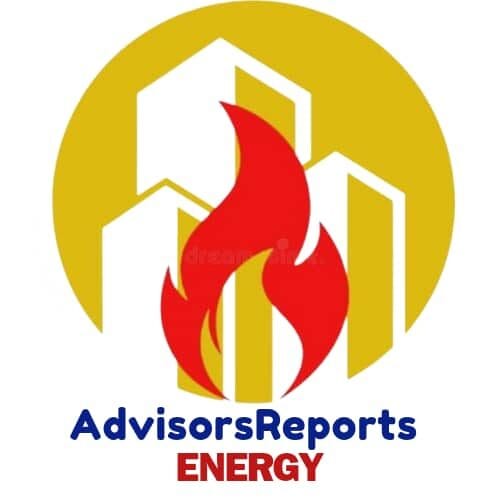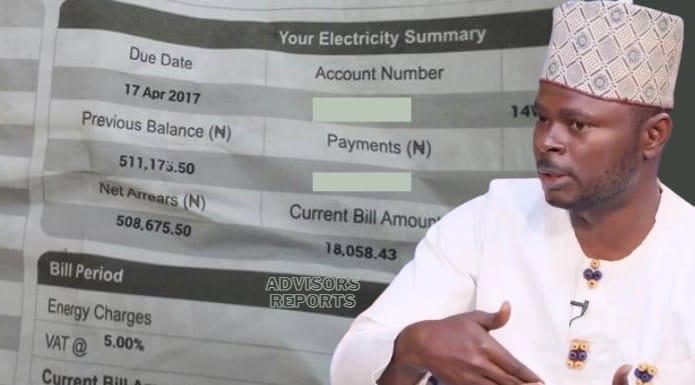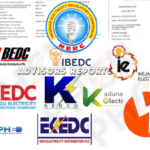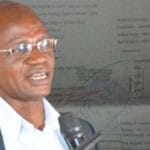… says “Affluent Nigerians to pay full electricity tariff
“Government electricity subsidy shifts to vulnerable customers from April 2024”
Mr. Adetayo Adegbemle, Executive Director of PowerUp Nigeria, a leading voice in Nigeria’s power sector has in this exclusive document obtained by Oredola Adeola, Senior Partner, Advisors Reports, sheds light on the latest electricity tariff review by the NERC, explaining the technical rationale and government policy considerations. The Government Policy expert also highlighted the Power Up’s efforts to protect consumers and ensure accountability for distribution companies through rigorous monitoring and evaluation. Excerpts
“Government subsidy has increased significantly from NGN8billion/month to over N240billion/month (i.e over 2900% increase in the last 15 months) due to the non-review of the tariffs.
As at 2023, Band A customer’s accounts for 15% customer population, they consume no less than 40% of total energy delivered by DisCos (in some cases, they account for up to 60% of total consumption)
This therefore means that 60 percent of N240billion paid monthly as electricity subsidy to service the consumption of residents of affluent areas of their respective franchise areas e.g. Lagos – Ikoyi, Ikeja GRA, Magodo; FCT – Maitama, Asokoro, Wuse, etc… and industrial layouts.
But with the implementation of the April, 2024, Cost Reflective Tarriff /Service based Tarriff for Band A customers who are predominantly on the relatively more affluent, the Nigerian Government will refocus its subsidy intervention to the vulnerable customers – representing more than 85% of total customer population.”
What is a Service-Based Tariff (SBT) and the Customer-Centric Approach to achieving this?
The SBT scheme was first introduced by the Nigerian Electricity Regulatory Commission (NERC) in September of 2020 with tariff increases for the 5 customer bands. Following engagements with refined to freeze D&E in November 2020.
It was developed following extensive stakeholder consultations where customers indicated that their willingness to pay for electricity was proportional to service delivery.
• Quality of Infrastructure: The customer band classification is determined by the quality of service a DisCo can deliver to the area considering the state of the distribution infrastructure.
• Under the SBT framework, consumers were classified into five (5) bands, based on the daily minimum level of energy supply as follows:
i. Band A: Minimum of 20 hours/day
ii. Band B: Minimum of 16 hours/day
iii. Band C: Minimum of 12 hours/day
iv. Band D: Minimum of 8 hours/day
v. Band E: Minimum of 4 hours/day
What is responsible for the periodical and frequent increase in electricity Cost-Reflective Tariff (CRT) and Service Based Tariff (SBT) in the Nigerian Electricity Supply Industry (NESI)?
• Road to Cost-Reflective Tariff, following 4 years of tariff freeze (2015 – 2019), the introduction of the SBT commenced with the process of converging the CRT (“Cost Reflective Tariff”) and the allowed end-user tariff (“Allowed Tariff”) in a bid to eliminate the Federal Government subsidy allocation to the power sector.
As at Dec 2022, the Allowed tariffs were at 90%+ of the Cost Reflective Tariff, which therefore reduced the FG’s subsidy allocation from a high of around N60 billion per month in 2019 to almost N10 billion per month in 2022/23.
However, with the current changes in the macroeconomic environment, the tariffs being charged are, on average, less than 30% cost-reflective.
This therefore contributed to the consistent decline in power generation and has exposed some of the fragility of the network leading to grid disturbances i.e., grid collapses.
• Stagnant/Outdated Tariff: Tariff currently paid in the electricity sector was set in
December 2022; i.e., over 15 months ago.
• Macroeconomic Changes: Considering the drastic change in the macroeconomic environment of Nigeria in the interim period, the existing tariffs are insufficient to cover capital and operational costs in the sector.
• Increased Government Subsidy: Government subsidy has increased substantially from NGN8billion/month to over N240billion/month (i.e over 2900% increase in the last 15 months) due to the non-review of the tariffs.
Why is there an increase in electricity tariffs for Band A customers?
• Quality of Infrastructure: The areas covered by Band A feeders often have the highest quality of distribution infrastructure.
• High Consumption Areas: The review is focused on Band A primarily because today they represent a disproportionately high share of energy consumed relative to their share of the customer population – As at 2023, Band A customer’s accounts for 15% customer population, they consume no less than 40% of total energy delivered by DisCos (in some cases, they account for up to 60% of total consumption).
This is partly driven by the fact that many industrial customers are on Band A.
• Increased affordability – There is a level of correlation between affordability and Band A classification; the records submitted by DisCos indicate that many of their Band A feeders are the more affluent areas of their respective franchise areas e.g. Lagos – Ikoyi, Ikeja GRA, Magodo; FCT – Maitama, Asokoro, Wuse, etc…
• Reduction of Government Subsidy: By focusing the review on the relatively more affluent, the FGN is able to refocus its subsidy intervention to the vulnerable customers – representing more than 85% of total customer population.
• Cross-Subsidization Scheme: Since the introduction of the SBT, Band A customers have always paid above cost reflective tariff, as part of the cross-subsidization scheme in the NESI to protect the vulnerable.
What factors have influenced the need for this tariff adjustment?
• Changes in Macroeconomic Factors: The sharp rise foreign exchange rates (since May 2023), inflation and escalation of gas prices, have significantly impacted the overall cost of electricity production and distribution.
• Fiscal unsustainability of subsidies for FGN: Without a review of tariffs; the 2024 subsidy for the electricity sector is projected to reach ~N2.9 trillion which is over 10% of the federal budget for 2024.
• Impact of the increased subsidy on GenCos: Since October 2023, the increasing subsidy burden means that generation companies (GenCos) are recorded on average from the market; FGN is tasked with covering over 85% of the invoices (N240 billion).
The non-payment of GenCo invoices has negatively affected gas supply and overall generation in the NESI; reduced generation has exposed the grid to more vulnerability and has contributed to the 2 grid disturbances recorded over the past 6 months.
How does the recent harmonization of foreign exchange rates in Nigeria affect electricity tariffs?
• Increase in Cost-Reflective Tariff: The CRT in December 2020 was approximately NGN67/kWh, as at 2024, the CRT is approximately NGN200/kWh.
Analysis has shown that over 75% of the CRT increment (NGN100/kWh) is as a result of FX changes.
• Impact on Gas Prices: Gas is a major contributor to electricity generation in Nigeria, accounting for over 80% of power on the grid; gas accounts for an average of 60% of the cost of operation of a gas-based plant.
Gas price is indexed to dollars and payable in naira based on the official exchange rate. This means that while gas price remained at $2.18/MMBTu between 2022 to March 2023; the amount payable increased from N916/MMBtu to N3,161/MMBTu NMDRPA announced an increment of the gas price increase effective April 1st from $2.18/MMBTu to $2.42/MMBTu; this means gas effective gas price is now N3,500/MMBTu.
• Off-shore Procurement: A lot of the investment required in the entire value chain in the network (Generation, transmission and distribution) are imported. Consequently, the impact of FX trickles down to the final cost of electricity.
How will the Nigerian Electricity Regulatory Commission ensure compliance and monitor service quality going forward?
• Data-Driven Initiative: The Commission reviewed recent historical service delivery data to ensure that only consumers/feeders getting service at the Band A level are charged/considered.
Hence, the Commission relies on empirical evidence to ensure accurate service delivery.
Based on this, the number of approved band A feeders has been reduced from ~1000 to ~500 representing 15% of total number of total feeders.
Technological Solutions: The Commission will leverage technology to track DisCo’s compliance with their service obligations.
There will also be a daily interface between the Commission and the DisCos to review service provision.
Any feeder that fails to meet the required service level will be highlighted, so that enforcement actions can be taken against the DisCo in line with the provisions of the approved tariff order.
On a daily basis (by 9am of the following day), DisCos are required to publish the rolling 7-day service provision average on their website and social media platforms.
What if the supply quality in my area doesn’t meet the minimum hours stipulated in the SBT?
Where a DisCo fails to meet SLA for two (2) consecutive days, the DisCo is mandated to provide a public explanation, along with a resolution plan to restore service.
Where a DisCo fails to meet the committed service level of a feeder for consecutive seven (7) days, the feeder shall be automatically downgraded to the recorded level of quality of supply.
What channels are available to customers to report service delivery challenges, including outages and prolonged disruptions?
DisCos are mandated to set up a rapid response team to ensure effective service delivery on the committed minimum hours of supply to each service Band commencing with Band–A feeders.
The contact details of the rapid response teams will be shared on each DisCo’s website and circulate the same to the customers via bulk SMS, commencing with Band A clusters by CoB Friday April 5, 2024.
The team is expected to ensure timely response to customers’ complaints, fault clearing, and alignment with TCN regional teams for effective load management and optimized dispatch to respective feeders.
How will the tariff increase benefit Band A customers?
The tariff review is anchored on guaranteed service delivery to the customers; only feeders with historical compliance with the service level are covered in Band A
The cost of 1 kWh on the grid for Band A customers is NGN225, whereas obtaining the same amount of energy from a diesel generator would cost approximately NGN650 – 700 (at a diesel price of NGN1,700).
Band A customers, by paying the revised tariff rate of NGN225, can enjoy electricity at a significantly lower cost for the equivalent amount of energy consumed, compared to using a diesel generator.
Many of the maximum demand users (industries and productive users of electricity) are covered under Band A feeders – thereby catalyzing industry as a vehicle for economic development.
This increased energy supply to these feeders will reduce their net energy spend because otherwise they would have to depend on diesel gensets which cost >2x of grid energy per kWh.
What is the assurance that the tariff review will not affect the average Nigerian?
This tariff design is intentionally designed to be pro-poor. The Commission has reviewed the areas that are proposed for review, and they are generally the areas where consumers have higher affordability levels compared to other areas.
Notwithstanding, the DisCos have a universal obligation to ensure that service is delivered to customers, and as part of this reform, they will be given clear KPIs that envisage an upward migration of certain number of feeders to band A on quarterly basis, thereby improving the overall level of service to their customers under their franchise area.




